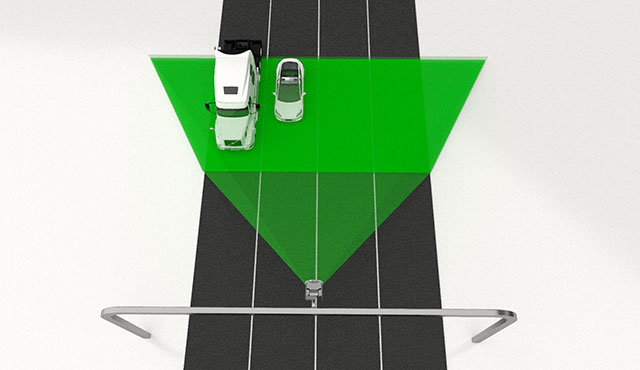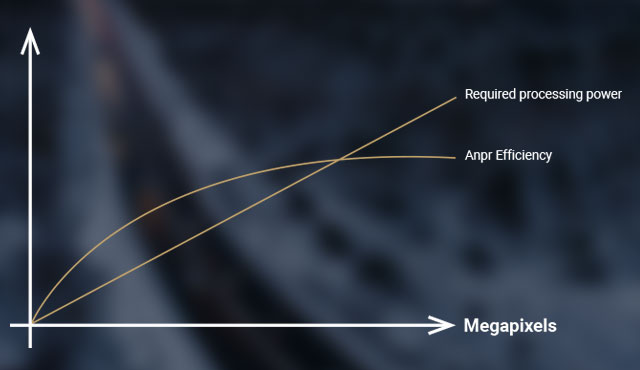Busting the ANPR Megapixel Myth
Vendors release ANPR cameras with higher and higher resolution, but does it really contribute to ANPR performance? Let’s find it out…
In technology, we often experience “wars of numbers”. The one that you can relate to the most, is probably the innovation of our mobile phones. First, there was a battle of megapixels, demanding more, more and more. However, in the end, it turned out that it’s just one of the many factors that really contribute to image quality and manufacturers started to focus on the lens instead. Then came the battle of displays: larger and larger. Then touchscreens got so large we could not even use them conveniently. Today, these parameters got balanced and we could say, such wars ended – but it did not happen immediately.
Something similar can happen even in such niche technologies as license plate recognition cameras; in these years, it’s the continuous rise of megapixels. The question is whether it contributes to ANPR performance… or is it just the result of vendors’ cold war of image resolution?


The major reason why ANPR camera manufacturers increase resolution is the camera’s lane coverage. As they state, the higher resolution allows a single camera to cover more lanes – so you can use less cameras for the same project. Of course, it sounds awesome from a customer’s point of view, as it seems high-tech and cost-efficient at the same time. However, we as a manufacturer also see the downside of it – so we decided to shed some light on this topic, and finally debunk the ANPR “megapixel myth”.
Fasten your seatbelts, we are doing a deep dive in ANPR! If you listen closely, it will surely pay off at your next project.
How Image Resolution Affects ANPR Performance
Generally speaking, higher resolution means better recognition. It’s evident: the software has more input (data) to process, therefore it can perform with higher reliability. You have probably experienced the same when you needed to make an important decision: you can make better decisions confidently with more information.
Minimal Image Resolution for ANPR
In practice, the minimum width of a character line on the plate should be 2 pixels – that’s the requirement of professional ANPR software (such as Carmen®). Below this, ANPR gets pretty uncertain – something that nobody wants in a traffic project.

So to calculate how much resolution we need to achieve the minimum 2 pixels character line width – let’s do the math:
Facts:
- a lane is 3.5 meters wide (on European roads)
- the width of a license plate character line is 10 mm.
Math:
- to get at least 2 pixels for a character line, we need 2 pixels for every 10mm
- a 3500mm wide lane has 350 of these 10mm sections
- therefore, 2 * 350 = at least 700 pixels will be required.
It’s important to emphasize that this number is a purely theoretical minimum that is only appropriate when there is no blur, distortion, etc., on the images – and that’s not a scenario in real life.
Optimal Image Resolution for ANPR
In our 30 years of experience, we found that the resolution will be optimal for ANPR if we double this number. This is why even our entry-level Vidar cameras come with HDx resolution (1440 x 1080 pixels). Capturing the traffic using such sensors results in 4 pixels character line width on European roads and 2-3 pixels on US and Middle-East license plates.
When you evaluate ANPR cameras, always remind yourself of the math. If you read that a 1920 x 1080 camera can cover three lanes, bear in mind that it’s only 640 pixels per lane, lower than the very minimum.

Multi-Lane ANPR
If you reached this part of our article, you already know: the higher resolution a camera has, the more lanes it can cover. But is it that simple? Actually not. Covering multiple lanes by a single camera has various challenges – and some of these cannot be overcome. Read on to learn why.
Five Typical Problems of Multi-Lane ANPR
Let’s assume you do have the required resolution for covering multiple lanes, and you start to use an ANPR camera for three or even four lanes. Though it sounds good, ANPR results will not shine that much. Our recommendation is not to go above two lanes. Here are five reasons to prove it.
Blocked View
Larger vehicles may block the view of smaller ones passing by in an adjacent lane, leading to the possibility of missed events.
Processing Power
The more lanes you cover, the higher processing power you will need. The chance of missed events, delays, network overload will increase as the number of lanes increases.
High Resolution
The formula is simple: the bigger the picture resolution, the bigger the file – and more data the ANPR camera has to handle. However, these traffic cameras also have to endure extreme conditions while being as cost-effective as possible. Because of this, they are equipped with limited CPUs, which aren’t able to process high-resolution pictures quickly. And since fewer pictures are processed, accurate triggering becomes more crucial than ever.
Adaptive Recognition’s latest ANPR solution, Vidar, answers both challenges with game-changing ingenuity. It offers three unique triggering options in the form of Plate Finder, the virtual loop, and the industry-first built-in laser trigger. Also, it doesn’t shy away from processing high-resolution images, thanks to having two processors. While the dual-core processor deals with operating the unit itself, the other quad-core CPU is dedicated to ANPR functions. This ensures economical operation and compliance with industry standards for durability without compromising ANPR quality.
Lens Aberrations
Even the best lenses have so-called aberrations: there is a difference in image quality between the middle and the side of the image. Getting closer to the sides, the image becomes less sharp, a bit faded, and distorted, taking a negative effect on ANPR performance.
Evidence
In many countries, a traffic image is admissible evidence at the court when it shows only one vehicle. Images showing multiple vehicles are not accepted for such legal procedures. So unless you have a feature that cuts out each vehicle, this may also be an issue.
Three Tips for Multi-Lane ANPR
Our recommendation is to use a camera for one lane or a maximum for two lanes – however, if your camera captures multiple lanes, make sure to follow our professional guidance. We collected three tips to achieve the best possible performance.
- The minimum image resolution should be at least 700 pixels per lane or, ideally, 1440 pixels per lane (in an HDx camera).
- Use only the overhead installation instead of the lateral position. This way, you can minimize missed events (due to blocked view) and distortion.
- Make use of your dedicated ANPR cameras’ synchronized and focused illumination features. However, the most up-to-date models, such as Vidar, can go even further. By being capable of auto-adjusting the brightness for odd and even frames simultaneously, Vidar can take ANPR-compatible pictures of reflective and non-reflective license plates without the need for additional illumination.
We hope you find this guide useful. If you are still uncertain how to position your camera and what parameters you need for the best performance, feel free to get in touch with us – our experts are always glad to share their knowledge.
Also, take a look at our latest innovation: Vidar. Using this model, you can cover up to two lanes reliably. Learn how →
